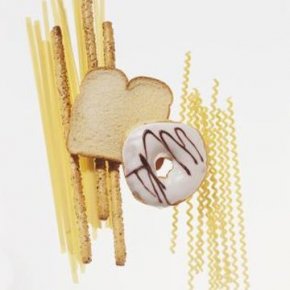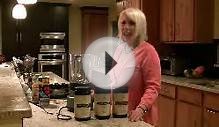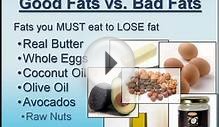
 Food made from white flour or refined sugar isn't allowed on the No White Foods diet.
Food made from white flour or refined sugar isn't allowed on the No White Foods diet.
The Eat Nothing White diet goes by a number of other names, including the No White Foods diet and the No White at Night diet. All are based on the same principle - the key to losing weight is to stop eating a specific list of white foods. Proponents of the diet say that the majority of white foods contain a high concentration of simple carbohydrates that cause your blood sugar to spike, then drop, causing you to overeat and gain weight. Health experts like the Mayo Clinic's Dr. Jon Ebbert praise many aspects of diets that eliminate white foods, though some dieters may find the plan too difficult to stay on long term.
Aspects
A person just beginning the Eat Nothing White diet is instructed to completely eliminate the following foods from her diet: white rice, white potatoes, white beans, white sugar and any product made with refined sugar and white flour products like white bread or pasta. No White Foods diet followers are also told to avoid using solid fats that are white without artificial coloring added, such as cheddar cheese or butter. The only exceptions to the no-white rule are cauliflower, egg whites, parsnips, milk, white fish and white poultry meat. A dieter should replace the restricted foods in his meals with brown rice, whole-wheat pasta and bread and a wide variety of colorful fruits and vegetables.
Sample Daily Menu
A typical day on the Eat Nothing White diet might begin with a breakfast of egg whites scrambled with spinach or tomatoes and served with dry whole-grain toast, or a whole-grain cereal like muesli, non-fat milk, berries and almonds. Lunch could be a brown rice or wheat berry salad containing chopped vegetables and herbs and dressed with an olive oil-based vinaigrette. Grilled fish or chicken breast, steamed or sautéed vegetables and a green salad might serve as dinner. Dieters are encouraged to have a morning and afternoon snack. Snack choices might include fresh or dried fruit, raw nuts or vegetables with a bean-based dip like hummus.
Advantages
According to Ebbert, eliminating white potatoes, white bread, white rice and white pasta from your diet will help you lose weight. Ebbert adds that increasing your intake of whole grains and lean protein from beans, meat and fish, as recommended by the No White Foods diet, will aid with weight loss. Nutritionist Joanna McMillan Price agrees, saying that the lean protein, vegetables and whole-grain products emphasized by diets that eliminate white foods are all items with a low glycemic index, meaning that they will not cause your blood sugar to spike. By eating more colorful fruits and vegetables, you'll have an increased intake of the phytochemicals that are linked to a decreased risk of heart disease, cancer and diabetes.
Disadvantages
While most versions of the No White Foods diet say that regular exercise is important, none provide specific exercise instructions, which may be a problem for people who need more encouragement to begin a regular schedule of physical activity. The diet also does not inform followers about portion control or provide sample menus for people with differing nutritional requirements, such as vegetarians or vegans or those trying to follow a gluten-free or kosher eating plan. Some dieters may find it too hard to eliminate all white rice, bread, pasta and potatoes from their meals, and may end up regaining all the weight they lost when they begin eating these foods again.
INTERESTING VIDEO












